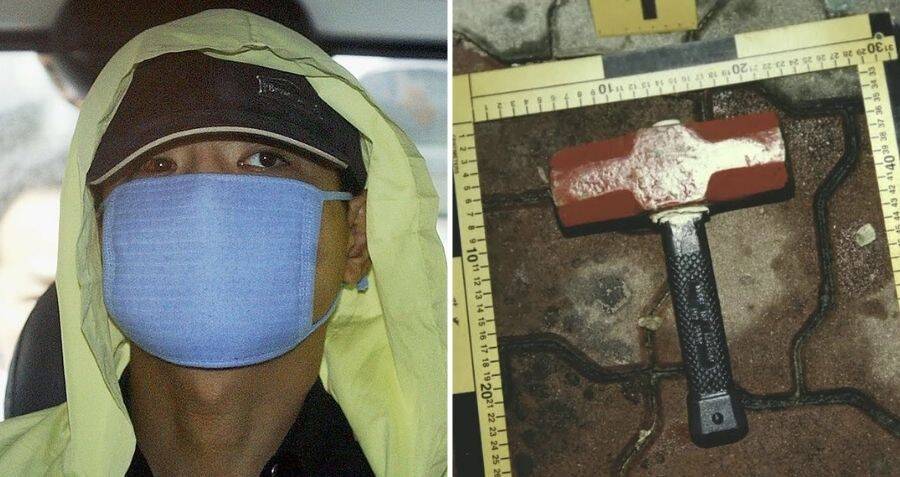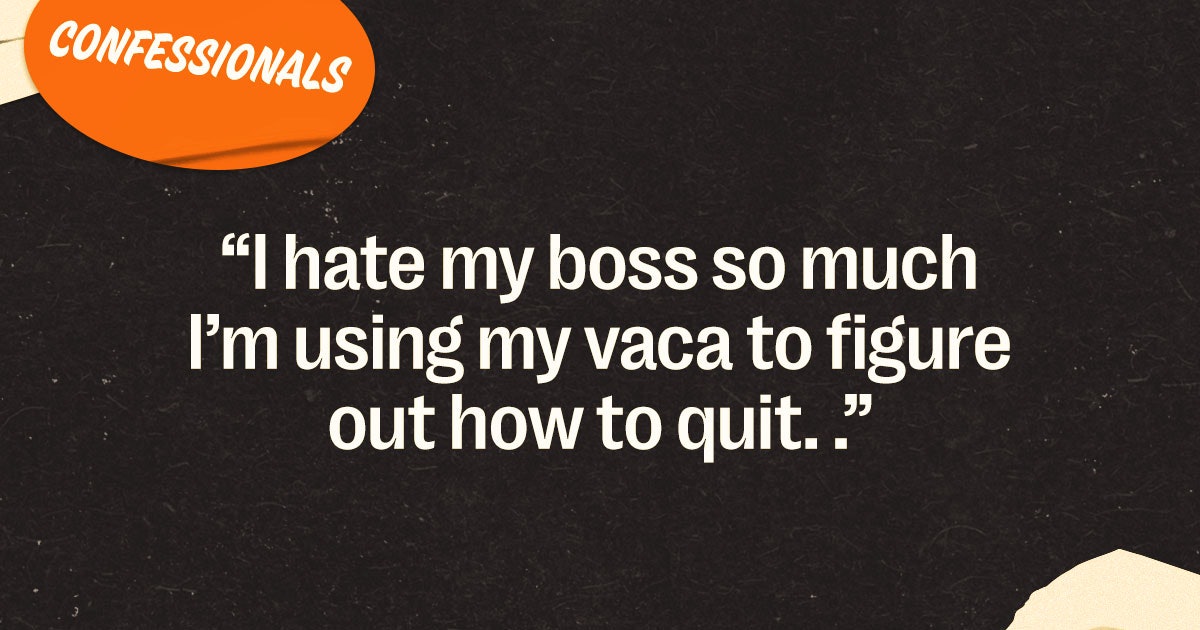The Chilling Crimes of Yoo Young-chul, South Korea’s Terrifying ‘Raincoat Killer’
From September 2003 to July 2004, Yoo Young-chul killed at least 20 people in Seoul, making him the deadliest serial killer in South Korean history.
Imagine living in Seoul, minding your own business, only to hear that your affluent neighbor or the local massage parlor worker has been brutally murdered. What a nightmare, right? Welcome to the grisly saga of Yoo Young-chul, also known as the ‘Raincoat Killer.’
To the police, the sudden spate of violent murders across Seoul seemed puzzlingly different. To Yoo Young-chul, they all made perfect sense.
Fueled by an unrelenting hatred for women and the wealthy, Yoo’s targets were pretty clear. He snuck into lavish homes to murder the rich and invited sex workers to his apartment only to end their lives in his bathroom.
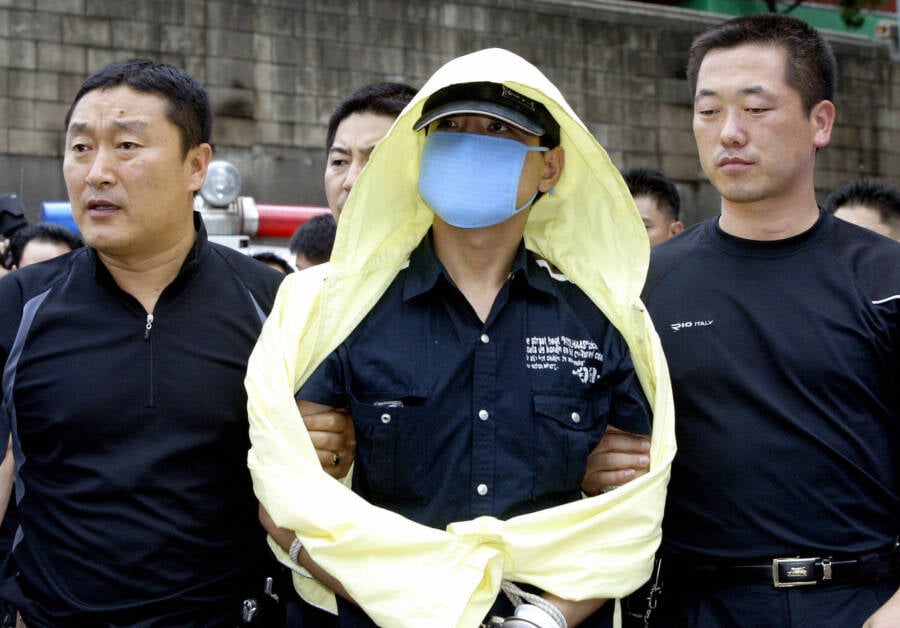
KIM MI-OK/AFP via Getty ImagesYoo Young-chul, the so-called Raincoat Killer.
For ten months, his murder spree shocked and baffled South Korean police. In the end, it wasn’t crackerjack detective work that brought him down — no, it was the keen eyes of massage parlor workers where he found his victims.
Here’s the spine-chilling tale of Yoo Young-chul, South Korea’s infamous “Raincoat Killer.”
Yoo Young-chul’s Hatred for Women and the Wealthy
Yoo Young-chul’s bitterness towards the rich started almost as soon as he could toddle. Born on April 18, 1970, in the sleepy rural town of Gochang County in South Korea, he grew up poor.
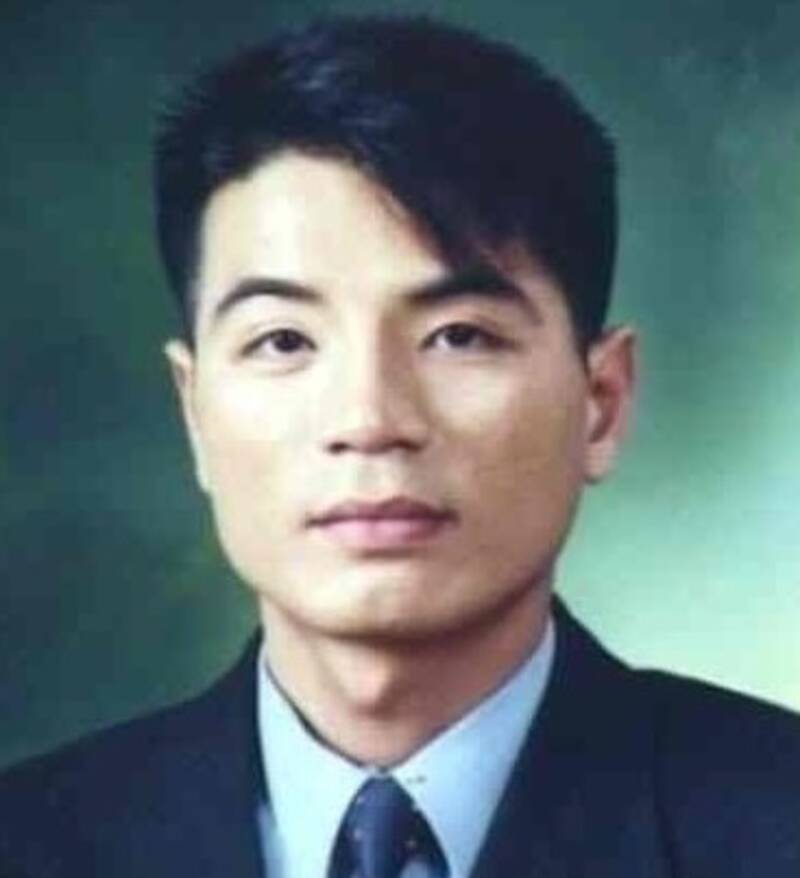
FacebookAn undated photo of Yoo Young-chul, one of the few in circulation.
Staring enviously at a wealthy family nearby, his jealousy morphed into deep-rooted hostility. Prosecutors later noted that his “family and economic environment” seeded his animosity against the rich.
By the time Yoo reached adulthood, he was perfecting his criminal resume. Convictions for theft, burglary, and robbery piled up, but nothing, it seemed, could suppress his anger. A stint in prison for raping a 15-year-old girl in 2000 only fanned the flames of his vengeful fantasies.
Prison gave him time to plot. Reading about Korean serial killer Jeong Du-yeong, who had targeted the affluent, Yoo began contemplating his heinous plans. When his wife, an ex-massage parlor worker, left him, he directed his ire towards women as well.
“Women should not be sluts, and the rich should know what they have done,” Yoo succinctly put it. Lovely sentiment, isn’t it?
Becoming South Korea’s Most Prolific Serial Killer
Once released from prison in September 2003, Yoo wasted no time. Armed with weapons and unresolved rage, he initiated his murderous agenda. His debut was chilling: on Sept. 24, 2003, merely 13 days after his release, he attacked and killed a prestigious professor and his wife in their upscale home, using a custom-made hammer.

YouTubeFor a long time, police had only grainy footage of Yoo Young-chul leaving a crimes scene.
Yoo’s gruesome activities accelerated. He murdered three family members in October, followed by two more attacks in November.
With no apparent connections between victims and no stolen valuables, the police were stumped. Footprints and grainy CCTV footage were their only crumbs.
As if murdering wealthy individuals wasn’t satisfying enough, Yoo soon targeted sex workers, women who reminded him of his ex-wife and girlfriend.
He’d lure them to his apartment under the guise of normalcy, only to bludgeon them with his sledgehammer, precisely crafted to fit his hand. The aftermath was nothing short of macabre: mutilating bodies, cutting them into pieces, and burying them near Bongwon Temple.
Oh, and Yoo claimed that eating parts of his victims would “cleanse his spirit.” Right, because nothing says purification like cannibalism.
The Arrest of the ‘Raincoat Killer’
Yoo’s killing spree from May to July 2004 focused almost solely on sex workers. But unlike the affluent, their disappearances didn’t stir much panic. Only massage parlor owners sensed something amiss. When Yoo used a victim’s phone to book another appointment, it led to his undoing. The massage parlor owner, recognizing the number, tipped off the police.
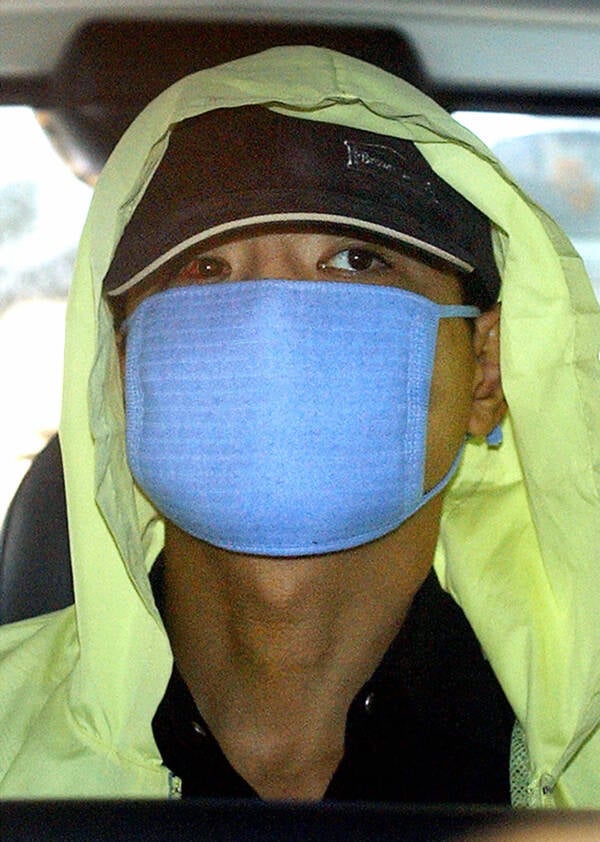
KIM MI-OK/AFP via Getty ImagesYoo Young-chul was dubbed the “Raincoat Killer” because of a yellow raincoat he wore while showing police where he buried his victims. July 19, 2004.
An officer was dispatched, but they left before Yoo arrived. Kudos to them. It was the vigilant massage parlor employees who detained him.
“It’s true that the massage parlor people caught Mr. Yoo first,” an agency official later remarked. “But isn’t it also true that we sent our man?” Talk about deflecting credit.
Yoo’s capture was bizarrely theatrical. After feigning an epileptic fit and escaping for twelve hours, he was recaptured and spilled the beans on all his horrendous acts.
Donned in a yellow raincoat, which earned him the ‘Raincoat Killer’ moniker, Yoo led police to his burial sites. He confessed to 26 murders, showing zero remorse.
He was convicted of 20 homicides in December 2004 and sentenced to death, although South Korea’s hold on executions means he’s rotting away in Seoul Detention Center.
The Legacy of Yoo Young-chul’s Killing Spree
Yoo’s abominable crimes left South Korea reeling. His grotesque exploits were dramatized in the 2008 film ‘The Chaser’ and the 2021 Netflix documentary ‘The Raincoat Killer: Chasing a Predator in Korea.’

YouTubeYoo Young-chul’s custom made hammer, as featured in Netflix’s 2021 documentary on his crimes.
This case was a wake-up call for the South Korean police. The sheer frequency and brutality of the murders highlighted systemic flaws — a lack of inter-district communication and reluctance to share information about unsolved cases.
Consequently, the Korean police underwent a significant overhaul to address these inefficiencies post-Yoo’s arrest.
Many have tried to pinpoint why Yoo turned into a serial killer. Some link it to the Korean financial crisis of 1998, which widened the gap between rich and poor.
Yoo claimed, “I did it to kill society.” He saw himself as a self-appointed avenger against the inequality that plagued his life.
But let’s be real. His grandiosity veils one tragic truth: Yoo targeted the vulnerable. He attacked the elderly during the day and murdered women living on society’s margins. His killings weren’t about salvation or justice; they were acts of pure spite.
In the end, Yoo achieved nothing but an eternity in prison, leaving a legacy of horror and reform in his wake.
